On Assignment: Out in the Cold
The NHL Stadium Series scores on the ice but leaves fans upset with transportation waits and long lines
Posted On: February 21, 2020 By :The NHL has gotten very good at all things outdoors. What began as a novelty in 2003 has resulted in 30 outdoor games, on New Year’s Day for the Winter Classic and at the Stadium Series during various points of the season. The Navy Federal Credit Union Stadium Series in particular has allowed the league to spread into nearly 10 different markets (even Los Angeles hosted in 2014) and in some cases to return to the same market in a relatively short amount of time.
Such was the case February 15 when Colorado hosted its second Stadium Series event, and the first since the Colorado Avalanche hosted the Detroit Red Wings in 2016 at Denver’s Coors Field. This time around, as part of an initiative to host games at the sites of the nation’s military academies (The U.S. Naval Academy in Annapolis, Maryland, hosted in 2018), the league set its eyes on the U.S. Air Force Academy in Colorado Springs.
“This was of huge interest for the league to come back to Colorado,” said Steve Mayer, the NHL’s chief content officer. “It’s not that often we come back so quickly after we’ve had a game somewhere, but this made sense.”
While the NHL has generally excelled at its outdoor events, this one—as I witnessed firsthand—had some surprising flaws that serve as a prime example of what can go right and what can go wrong when it comes to organizing special events. And unfortunately, a spectator’s last impression can often be the lasting one.
The Good
First, let’s start with the positives and there were plenty to be had.
The venue: Falcon Stadium, the 58-year-old home to the Air Force football, is in a stunning location on the academy grounds at the foot of the Rocky Mountains. With a seating capacity of about 45,000 and a surprising amount of standing-room areas, it may have been one of the best venues yet to watch an outdoor game, which can be prone to odd sight lines and a faraway feel in other baseball and football stadiums where the event has previously been staged. In the end, 43,574 spectators bought tickets for the event.
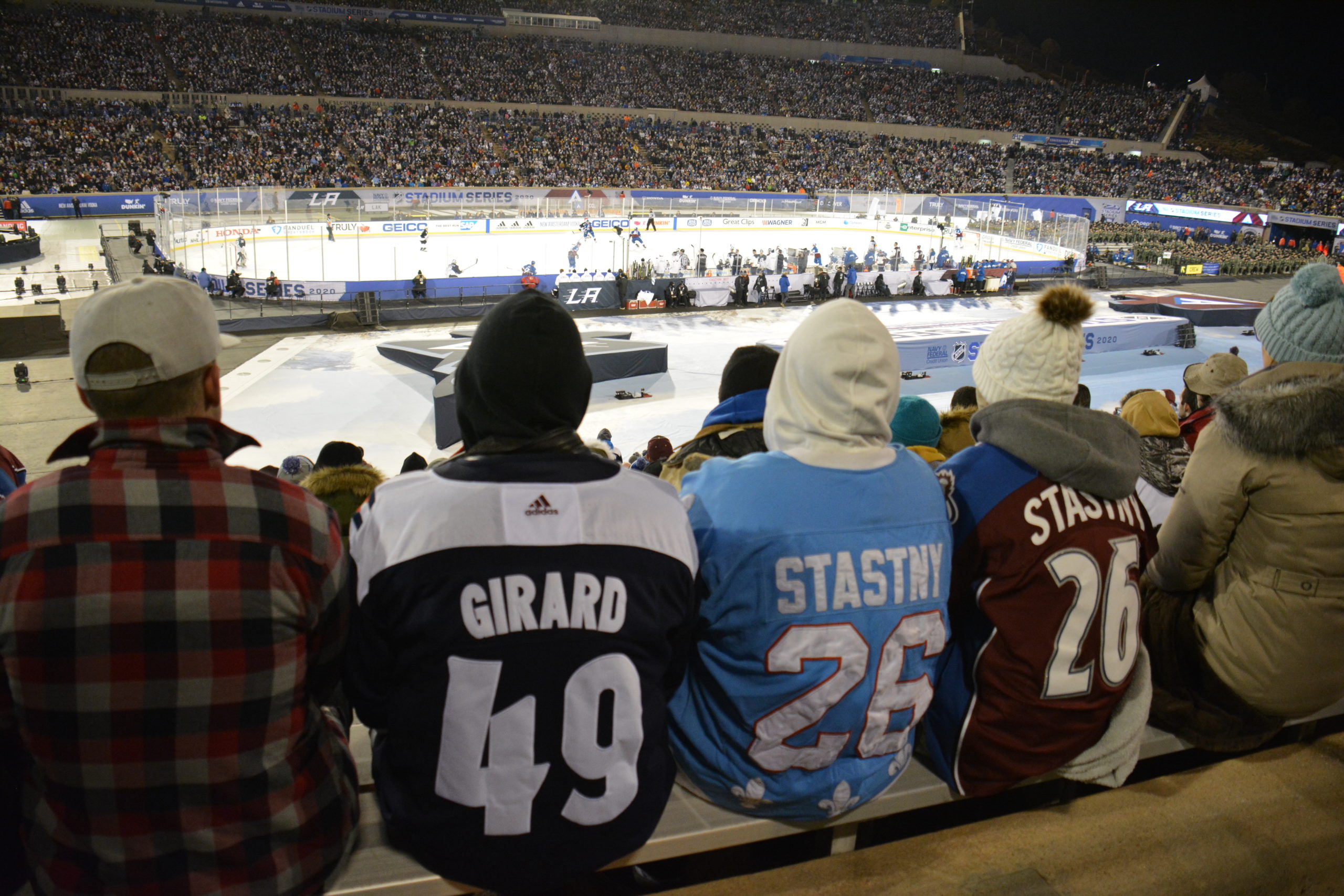
The field: The league took advantage of the setting with one of its most ambitious field decorations ever. The field outside the ice was staged to look like an active runway with runway lights, runway-type signs that spelled out the dates of the game, a helipad that doubled as a stage for musical acts, a landing zone for Air Force parachute experts, and featured the very first F16 Thunderbird, which was parked just off the boards.
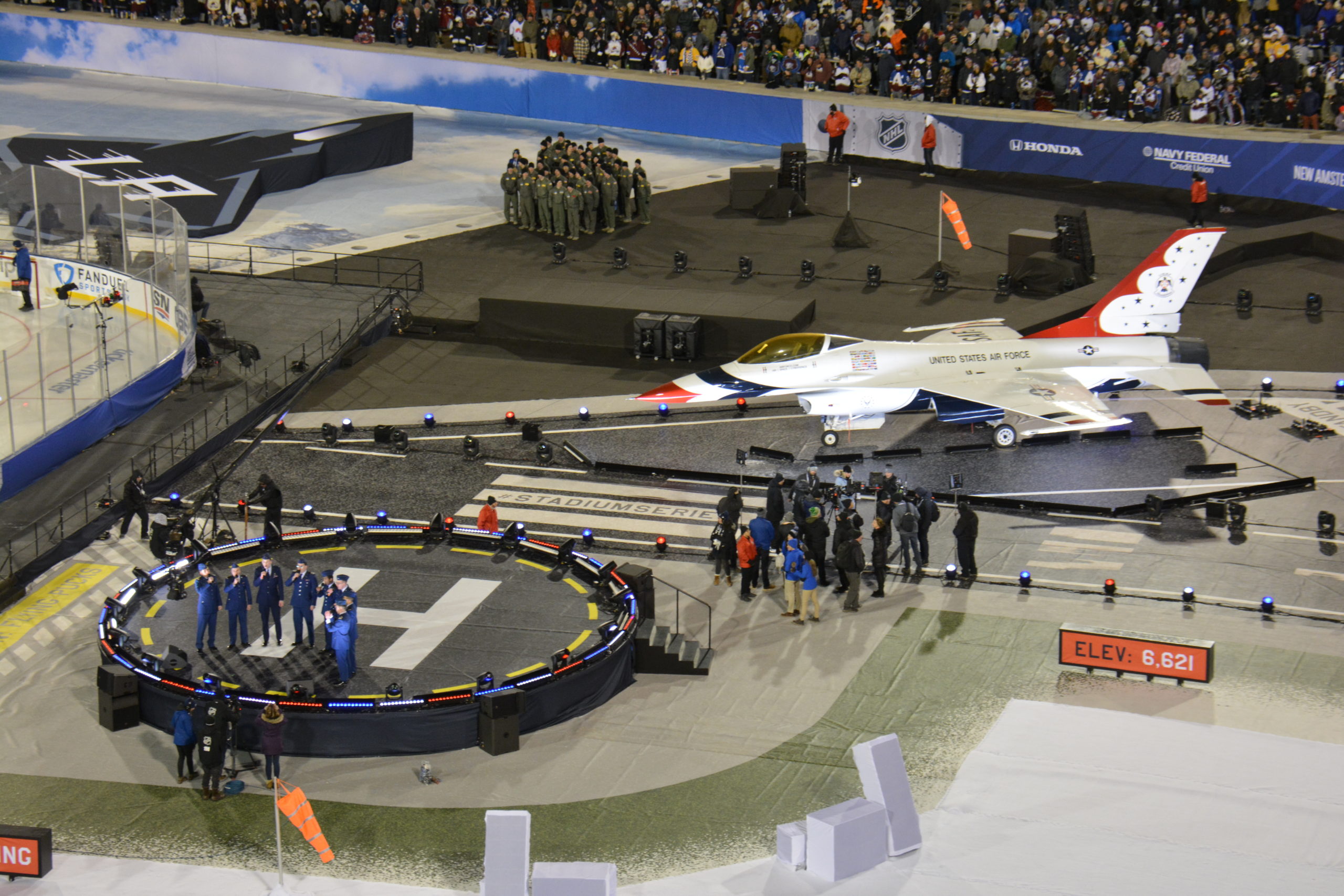
About that Thunderbird: It was brought in through a tunnel that the football team normally uses, with barely any room to spare. “We realized the tunnel is ‘X’ height, the plane is ‘X’ height and the difference was 1 inch,” Mayer said. “And we were praying that our measurements were accurate. I’m not kidding you, it was 1 inch—we just made it.”
The cadets: In the NHL’s previous 29 games, spectators had never been granted access to the ice. But for the first time, the league changed the policy, allowing hundreds of Air Force cadets in two seating areas behind one of the goals.
Teams entered and exited before and after each period on either side of the seating rows and down the middle to end the game, allowing for high-fives and great interaction between the players and the cadets. “Having the cadets near the ice surface was good,” said Kings Coach Todd McLellan. “We felt that going on and off the rink. They had a lot of energy and they were having a lot of fun.” When Kings winger Tyler Toffoli (who days after the game was traded to the Vancouver Canucks) left the ice after scoring the first hat trick in outdoor NHL history, he gave his stick to a cadet. It was a nice moment.

The Broadmoor: Asked after the game what his lasting impression was of the week, McLellan (whose team won 3-1) turned to the hospitality the team received at the city’s famed hotel, The Broadmoor. “Obviously the win for us is something that we’ll celebrate and we’re excited about that,” he said. “We got here Thursday and we got to spend time at the Broadmoor. They had us there and we appreciate that. That was a unique experience even though I’m not even talking about the game. I’ll remember that part.”
USA Hockey: Another nice touch throughout the week was the league’s embrace of USA Hockey, the national governing body of the sport based in Colorado Springs. While the league is still noncommittal with regard to its players competing in the Olympics, the NHL nonetheless embraced the NGB leading up to the game and during the event itself.
A legacy project left behind a new prototype for sled hockey benches at an ice rink in the city. And during the second intermission of the Stadium Series game, members of each U.S. gold medal-winning men’s, women’s and sled hockey team dating to 1960 were honored. “This event the NHL puts on is wonderful,” said William “Buzz” Schneider, one of the leading scorers for Team USA during the miracle run in 1980. “For them to include USA Hockey—and not even that, but to include eight of us Olympians, I think that’s pretty special.”
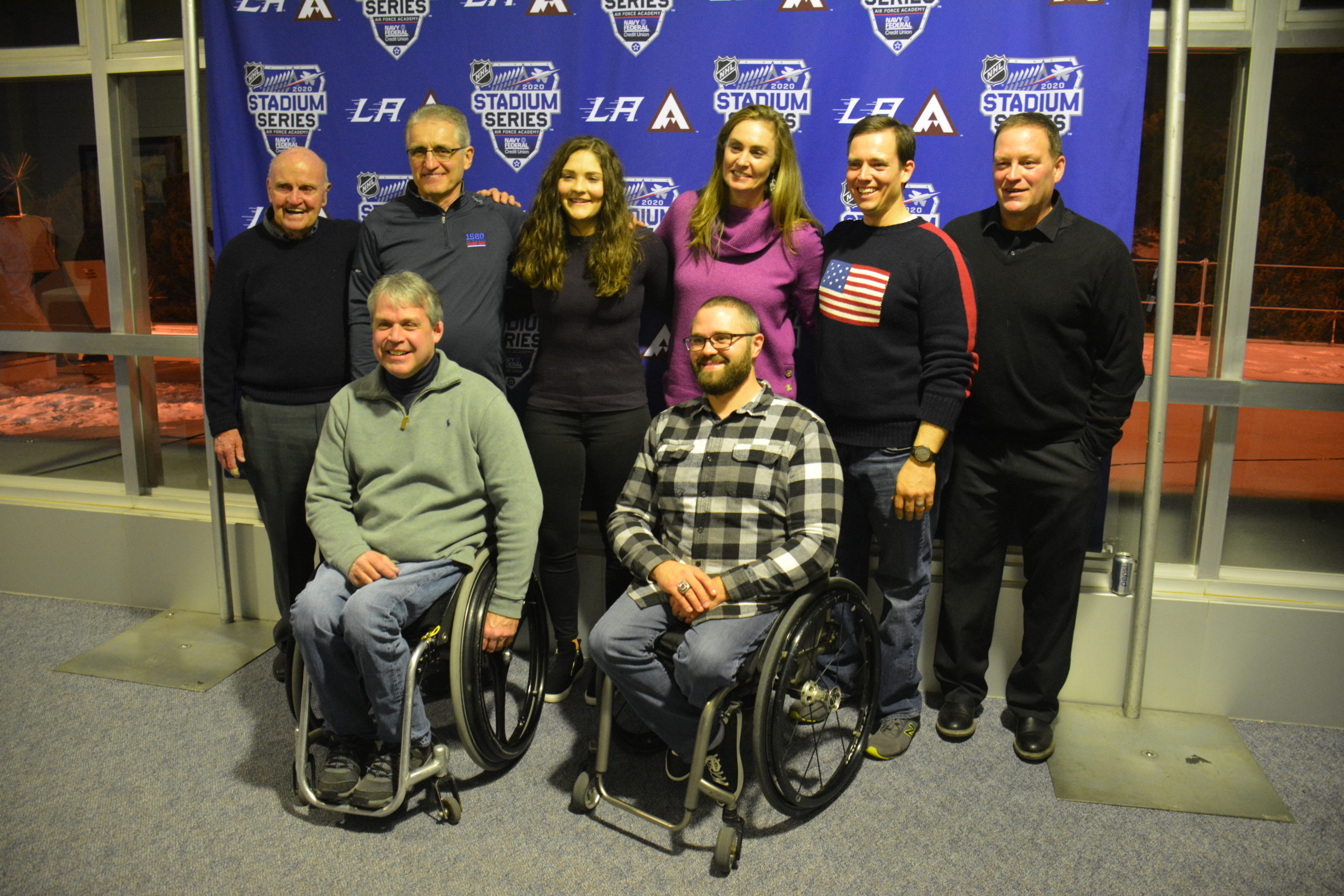
I had the chance to catch up with USA Hockey CEO Pat Kelleher before the intermission when the teams were honored, and he rightfully had great things to say about the league’s embrace. “Our partnership with the NHL has been so strong for so long,” Kelleher said. “The fact they came here to our hometown spotlights that.”
The Bad
All those positive aspects combined are thus hard to reconcile with the experience many spectators had getting to the stadium, in the concession lines and trying to leave the venue as well. It was an experience that caused the league and the Air Force Academy to issue a lengthy statement after the event and raised many questions about the logistics on game day itself.
Traffic: A drive from Denver, where many of the fans came from, to the Air Force Academy typically takes about an hour. With the stadium being on an active military base, spectators at Air Force football games are used to what can be a slow process of entry, usually requiring cars to be stopped and checked before entering academy grounds.
The NHL did advise fans to leave early, promoting a fan festival that opened at 1 p.m. local time before the 6 p.m. puck drop. But a long-term highway widening project between Denver and Colorado Springs that has caused traffic jams on good days and at least one major accident along that route before the game left some fans in traffic for up to five hours entering the game. As of 12:30 p.m., the academy stopped checking cars at its security gate but that still didn’t seem to stop the crawl leading into the area.
While accidents are certainly not the organizer’s fault, a better understanding of the construction’s effect on drive times could have allowed for even stronger warnings to spectators headed down to the event. Fans who left Denver even three hours before the event likely left too late to see the puck drop, which is out of the ordinary.
At the end of the game, the situation did not improve. After sitting through press conferences following the game, I was surprised to exit the media area more than an hour after the game had ended to find the roads backed up as if the game had just ended.
Parking: Part of that congestion on the way to the game was exacerbated by the scene at the parking lots surrounding the venue, a situation that unfortunately appeared to break down as well in some lots.
Fans could purchase $20 pre-paid parking vouchers with bar codes to be scanned. (On site, parking cost $30, and only in cash.) I purchased a prepaid voucher and the attendant at the lot I was sent to didn’t appear equipped to scan the document. She also didn’t check to see that it was a legitimate ticket.
The process of lining up cars in the dirt lots around the stadium, covered in snow and mud from recent weather, also did not appear to be organized. I overhead parking personnel at my lot complaining about other lots being parked haphazardly, with room for more cars. Those are things fans shouldn’t hear. There appeared to be an overall lack of understanding as to where people were supposed to be routed, causing further backups.
Transportation: Another breakdown came in the form of rideshare programs like Uber and Lyft. With traffic backed up as people were attempting to exit the event, reports circulated that rideshare drivers either couldn’t get through the academy’s security or refused to accept rides because of the backups. It wasn’t clear where riders were supposed to pick up those rides, leading many to walk off the academy grounds themselves.
With the game ending at 9 p.m.and temperatures in the 20s, fans were faced with a dark walk of up to 3 miles off the grounds to find a ride. I couldn’t quite make out why so many people were walking as I inched my way out until later realizing they were headed off grounds to first pick up a ride.
Tragically, a civilian died exiting the grounds around 11 p.m. after falling off an overpass near the academy’s north entrance. That investigation closed the entrance for those still streaming out, exacerbating the situation. While the death is still under investigation, it’s hard to imagine that anyone walking off the grounds wasn’t there in the first place because of the traffic circumstances.
Bad: Fans at events are accustomed to waiting in concession or bathroom lines, but lines inside Falcon Stadium bordered on unreasonable. Most food and drink lines were dozens of people deep at least an hour before the game, and concession lines were similarly long with reports of merchandise being sold out by the time fans reached the front.
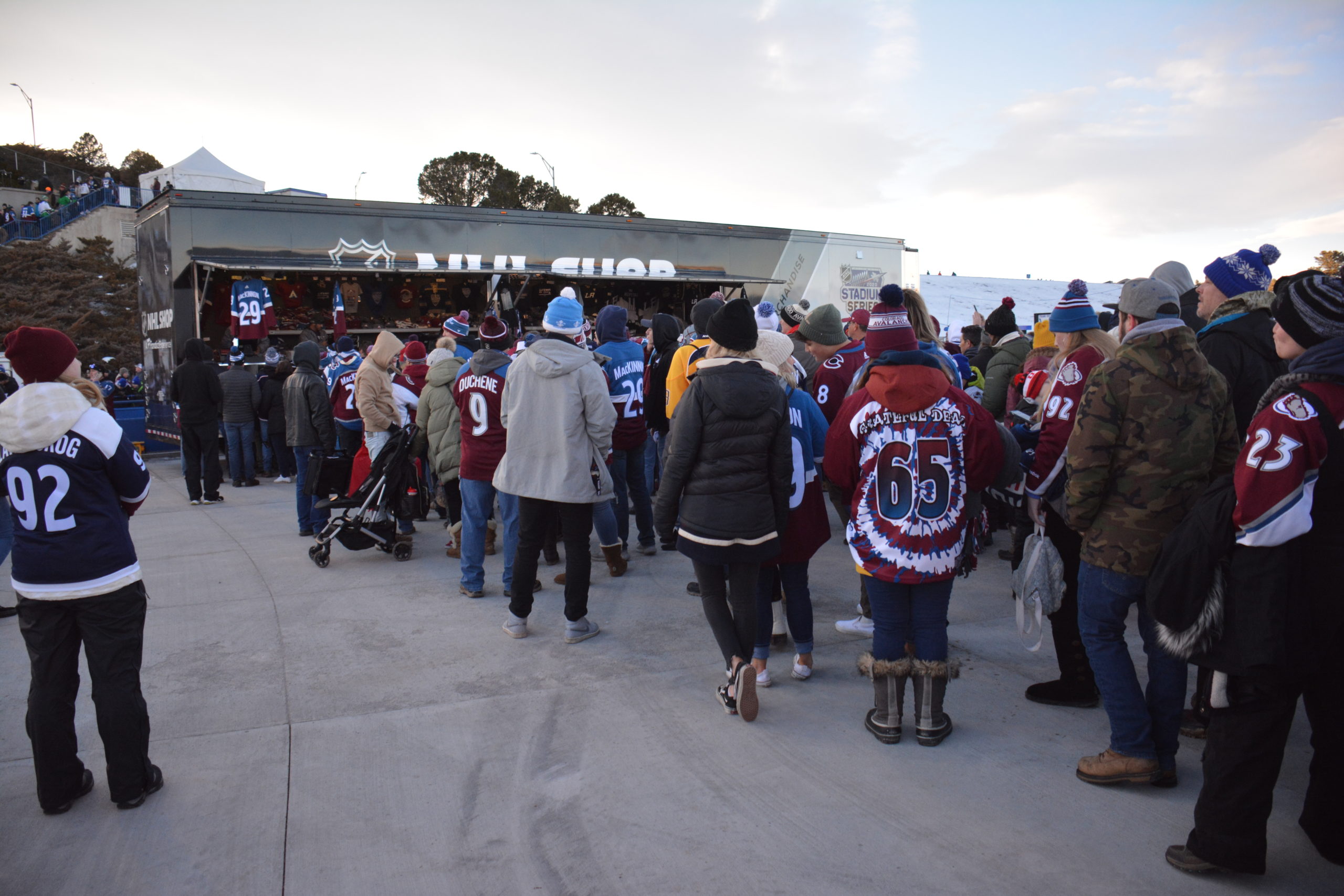
There were also an unusual number of bottlenecks by the main staircases that could take fans up or down one of the stadium’s levels, something that seemed avoidable with better signage or personnel.
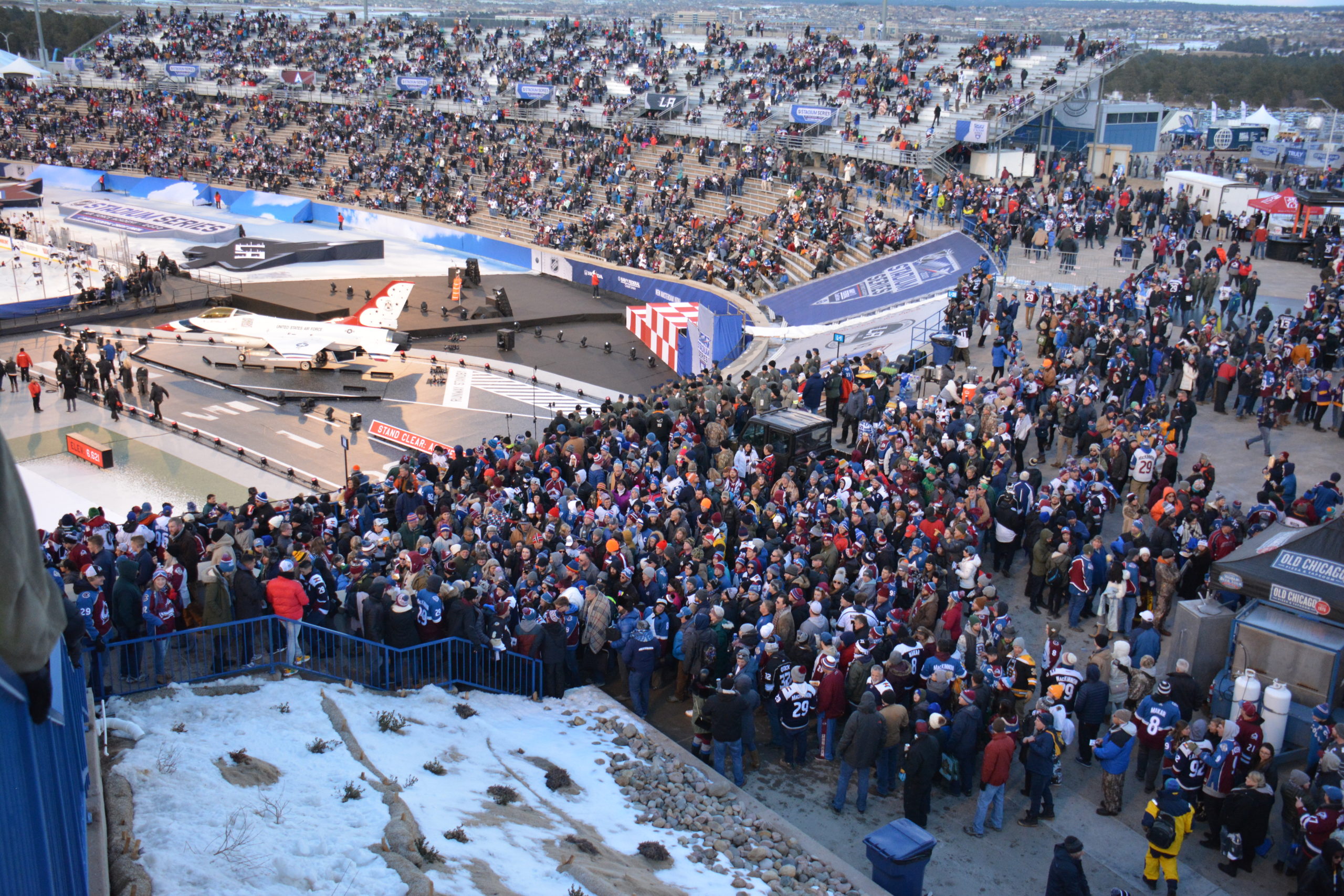
The response: The NHL and the Air Force Academy issued the following statement the day following the event:
“Multiple efforts were made by the NHL and Air Force Academy to warn attendees about potential traffic delays getting to the sold out Stadium Series game yesterday. In addition to website and social media posts, and signage along the I-25 corridor in the week leading up to the game, the NHL alerted the more than 43,000 fans who had purchased tickets about the need to allow plenty of time in traveling to Falcon Stadium on game day. As well, in the week leading up to the game, the NHL through numerous media interviews reminded fans about the need to plan their travel based on anticipated delays.
To mitigate the anticipated traffic congestion, the Academy opened at 5:30 a.m. and eliminated vehicle ID checks at 12:30 p.m. – five and half hours before the game. We thank the many fans who took advantage of that window to arrive well in advance and enjoy the Fan Fest activities that started at 1 p.m. Because of this early planning, the vast majority of fans were able to get to the stadium prior to the puck drop and had an amazing experience at the game.
Unfortunately, several factors the day of the game came together to cause even greater than expected traffic delays. Unlike many large sports venues, all traffic into the two gates at the Air Force Academy comes from one interstate. In the hours leading up to the game, there were numerous road condition changes and unforeseen events including multiple lane closures in both the northbound and southbound lanes of I-25, emergency pothole repairs that forced further lane closures, and multiple vehicle accidents between Castle Rock and Monument.
Despite our best efforts, all of these, added to the already challenging traffic conditions along the I-25 corridor, combined and unfortunately impacted some fans traveling to the game.
At the conclusion of the game, as we were routing traffic off base, there was a tragic incident at our North Gate that resulted in the death of one of our guests. Outbound traffic was immediately diverted to allow for emergency response crews and investigators to arrive on scene. While the details of that incident are still under investigation, we are devastated by the event and send the deepest condolences to his loved ones. We thank all of the crews who worked to clear traffic from the base despite only having one gate and we appreciate the patience and understanding of everyone impacted.
While we regret the unfortunate circumstances experienced by some fans, a near capacity crowd was in their seats at the start of an exciting night of hockey. We appreciate the efforts of fans who planned ahead and arrived early and most were able to enjoy a fantastic evening with multiple flyovers and musical performances that highlighted the competitive spirit of the NHL, the history and culture of the Academy, and the milestone achievements of USA Hockey.”
That statement does address the challenges that resulted. But unfortunately, sometimes an attendee’s last impression is the lasting impression, meaning the league and the Air Force Academy have more to think about when it comes to preparing for their next signature event.
Posted in: Feature Story, NHL, Olympic Sports, On Assignment, Perspectives